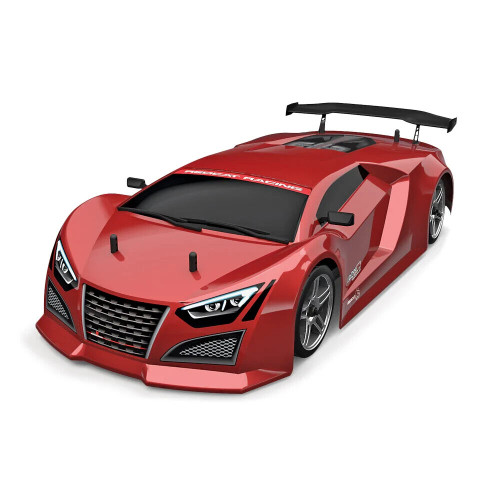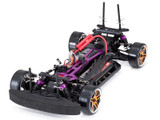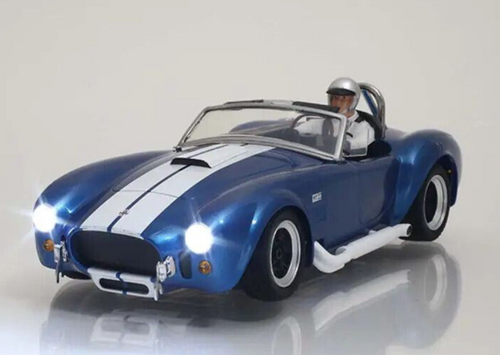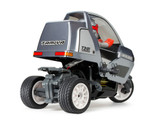



Discover a vast selection of RC cars and street-style kits at RCWORLD.US. From sleek 1/10 and 1/18 scale on-road models and drift machines to full R/C car bodies, kits and high-performance upgrades, this category has everything for hobbyists and speed enthusiasts alike. Browse ready-to-run cars, build-your-own kits, aftermarket shells, wheels, tires and electronics — all with fast shipping and expert support.






















Exploring The Exciting World Of Remote Control Cars:
A Comprehensive Guide To Buying, Maintaining, And Racing Rc Cars
Remote control cars, commonly referred to as RC cars, have gained significant popularity among hobbyists and enthusiasts around the world. With advancements in technology and increased accessibility to various models, these miniature vehicles offer a thrilling experience that transcends age barriers.
This comprehensive guide aims to provide valuable insight into the captivating world of RC cars by discussing their types, benefits, history, racing culture, accessories, safety measures, troubleshooting techniques, and popular brands.
The realm of RC cars is vast and dynamic; understanding its intricacies can be both exciting and overwhelming for newcomers. Delving into this guide will equip readers with essential knowledge pertaining to the purchase and maintenance of these vehicles while also shedding light on the exhilarating sport of RC car racing.
Moreover, it seeks to enhance users' overall experiences by addressing potential challenges associated with this hobby as well as offering practical solutions for common issues. Ultimately, this guide serves as an indispensable resource for those eager to immerse themselves in the electrifying domain of remote control cars.
Introduction to RC Cars
Delving into the realm of miniature automotive vehicles, this section provides an insightful introduction to the various aspects of acquiring, preserving, and competing with radio-controlled cars. Known as RC cars, these small-scale replicas of full-sized automobiles are controlled remotely using a transmitter that sends radio signals to a receiver within the vehicle.
Available in different sizes, styles, and performance levels, the world of RC cars presents enthusiasts with diverse opportunities for engagement – from leisurely driving for entertainment purposes to serious racing competitions on specially designed tracks.
The development and expansion of RC car technology have resulted in varying degrees of complexity when it comes to selecting, maintaining, and improving these vehicles. It is crucial for potential owners to understand essential factors such as size classifications (commonly categorized by scale ratios), power sources (electric or fuel-powered engines), drive systems (two-wheel or four-wheel drive), and vehicle types (ranging from off-road buggies to on-road racing models).
Additionally, knowledge about maintenance procedures—including battery care for electric models and engine tuning for fuel-powered variants—is imperative in order to maximize performance and extend the lifespan of these intricate machines.
Types of RC Cars
Diving into the realm of radio-controlled vehicles, it is crucial to comprehend the diverse types and models available in this fast-paced, adrenaline-pumping domain.
Generally, RC cars can be broadly categorized into two main segments: on-road and off-road vehicles. On-road cars are designed for smooth surfaces like paved streets, racetracks, or asphalted areas and often possess a sleek appearance with streamlined bodies for enhanced aerodynamics. Off-road cars, on the other hand, are built to tackle rough terrains such as dirt tracks, rocky landscapes, and grassy fields; they usually boast robust suspension systems and larger tires to absorb shocks from uneven surfaces.
In addition to these basic categories, RC cars also come in various scales that represent their size relative to real-life counterparts; popular examples include 1/10th scale (the most common), 1/8th scale (larger and faster), and 1/24th scale (smaller and more affordable).
Moreover, there is a distinction between electric-powered models – which rely on rechargeable batteries – versus gas- or nitro-powered alternatives that utilize internal combustion engines. Electric RC cars typically offer cleaner operation with less noise output while their gas/nitro counterparts deliver higher top speeds but require regular maintenance and fuel management.
Ultimately, enthusiasts must carefully consider their preferences regarding vehicle type, power source compatibility as well as performance capabilities before venturing into the exhilarating world of remote control car racing.
Benefits of RC Cars
The advantages of engaging in radio-controlled car activities extend beyond mere entertainment, as they offer numerous benefits that cater to a wide array of interests and skill levels. Individuals who participate in RC car hobbies often find that these pursuits enable them to develop and hone various skills such as hand-eye coordination, concentration, and problem-solving abilities.
Furthermore, the social aspect of joining an RC car club or participating in organized races can foster camaraderie among individuals who share a common interest.
- Enhanced cognitive development: Engaging with radio-controlled cars requires spatial awareness and quick decision-making capabilities which contribute to overall cognitive development.
- Social interaction opportunities: The collective enjoyment found within the realm of RC cars encourages individuals to connect with others through racing events or online forums, promoting social interaction.
- Stress reduction: Immersing oneself in the hobby can serve as an effective stress-reliever due to the therapeutic nature of focusing on a single task away from daily life pressures.
Radio-controlled car enthusiasts may also discover additional benefits extending into other areas of their lives. For instance, those who become proficient at building and maintaining their vehicles may find that they have developed valuable mechanical aptitude applicable to real-world automotive repair scenarios.
Moreover, parents who introduce their children to RC cars provide them with an opportunity for constructive playtime that instills valuable life skills while creating cherished memories together.
History of RC Cars
Tracing the origins and evolution of radio-controlled vehicles offers a fascinating glimpse into the technological advancements and innovations that have shaped this popular hobby over time.
The development of RC cars can be traced back to the late 1940s and early 1950s, when small-scale models of airplanes, boats, and cars were first equipped with radio transmitters and receivers. These early models relied on vacuum tubes for transmitting signals between controller and vehicle, which limited their range and functionality.
However, the introduction of solid-state electronics in the 1960s allowed for more compact designs and improved performance, paving the way for subsequent generations of RC cars.
The modern era of RC cars began in earnest during the 1970s with the release of several groundbreaking models that further expanded upon previous technological innovations. Among these was Tamiya's legendary Rough Rider buggy, released in 1979, which featured a fully independent suspension system and an electric motor capable of propelling it at high speeds over rough terrain.
The popularity of such vehicles led to a surge in interest among hobbyists who sought out new ways to modify their vehicles for increased performance or realism. This growing community would soon give rise to organized racing events as well as aftermarket support from manufacturers eager to cater to this burgeoning market segment.
Today's radio-controlled vehicles encompass a wide variety of styles and scales, from miniature replicas designed for indoor use to large-scale off-road machines boasting intricate detail and sophisticated engineering features.
RC Car Racing
Enthusiasts of radio-controlled vehicles have propelled the hobby into a competitive realm, with organized racing events and innovative modifications that continue to captivate participants and spectators alike. This evolution has turned RC car racing into a serious pursuit for many hobbyists, as it offers challenges in engineering, driving skills, and strategic thinking. Racing events are held both indoors and outdoors on various types of tracks such as off-road dirt tracks, carpeted indoor circuits, or even on asphalt road courses. Competitions range from local club meetings to national championships and international contests, attracting racers of all skill levels.
As the sport continues to evolve, several specialized classes of vehicles have emerged to cater to specific interests within the RC community. These classes are defined by factors like vehicle scale, motor type (electric or nitro-powered), chassis construction (2WD or 4WD), and body style (buggy, truck or touring). As a result of these distinctions, racers can compete in categories that best align with their preferences and skill sets.
- Off-Road Racing: Taking place on dirt tracks with natural obstacles like jumps and rough terrain.
- On-Road Racing: Focused on speed and precision driving on smooth surfaces such as asphalt or carpet.
- Drifting: A unique form of on-road racing where drivers intentionally oversteer their cars around tight turns.
- Rock Crawling: Slow-paced competitions where drivers navigate custom-built trucks over challenging rock formations.
- Oval Racing: Similar to full-size stock car racing, this format features high-speed laps around an oval track.